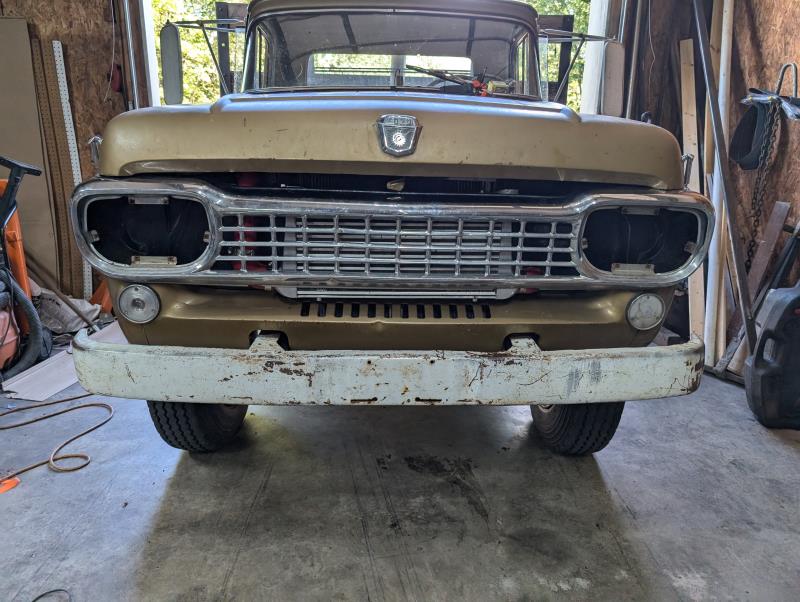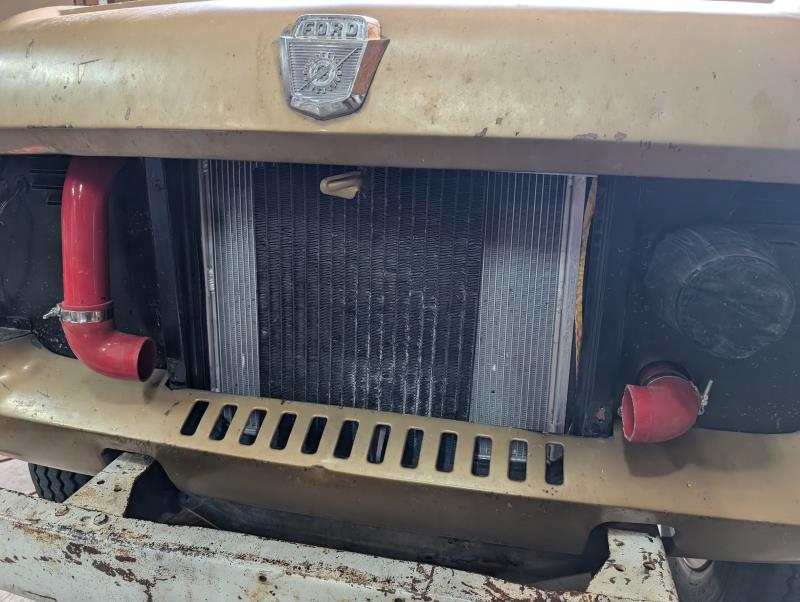The more I test and measure the dumber I get! Haha
Got some time to play with it today. Test rig is very simple. Using the coolant temp sensor which is drilled into the manifold right behind the thermostat housing as my "radiator in temp" and I have a thermocouple fed into the hose going into the water pump inlet as my "radiator out" temp.
At idle in the shop, right at 23° temp drop across the radiator. 156°/133°
Drove down the road. 2,800rpm 55ish mph 181°/167°
List of suspects, pictures below.
#1 lower intercooler mount. A simple piece of aluminum angle, must be blocking air flow and hurting us
#2 60 year old non aerodynamic grill, must be blocking air flow
#3 intercooler, huge. Mounted right in front of the radiator, must be contributing to the issue.
Step one removed the grill and lower intercooler mount. Results 188°/179°, yep worse.
Removed the intercooler completely. 183°/173°. The intercooler is maybe adding a single degree. Honestly this is within our measuring tolerance for error.
The grill is such that the head lights and bezels must be removed to pull the grill. With intercooler and grill installed, but headlights out. 188°/180°. Theory is the air pushing in the head light holes is disrupting the air going into the radiator.
It's cooling off and I'm pulling the fan/shroud and adding the flow through holes/flaps



